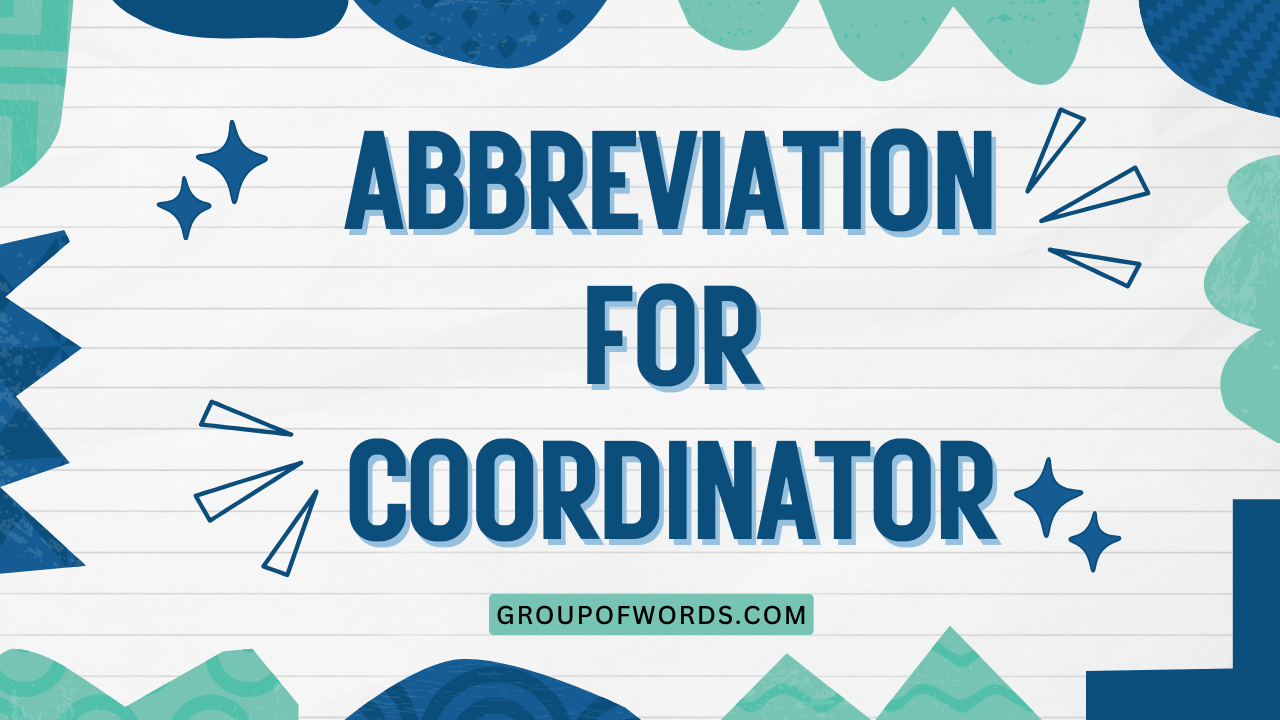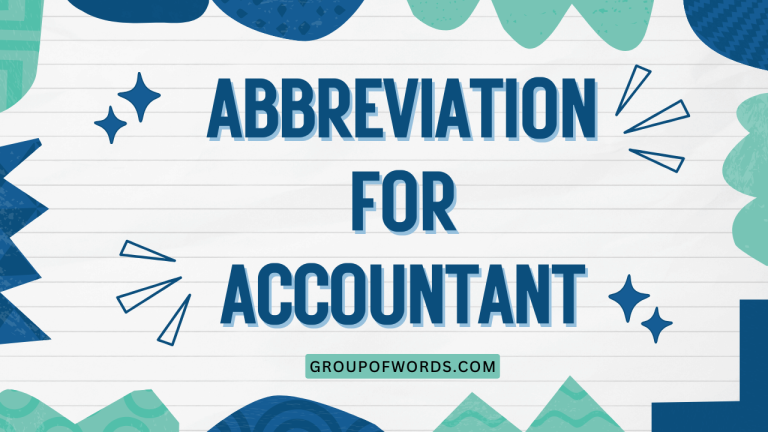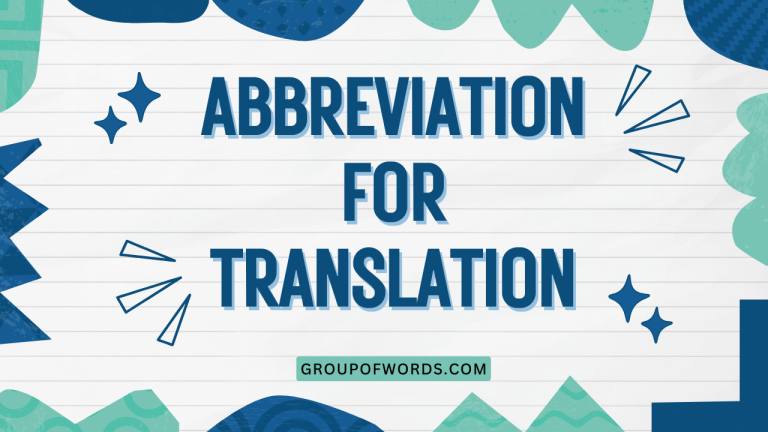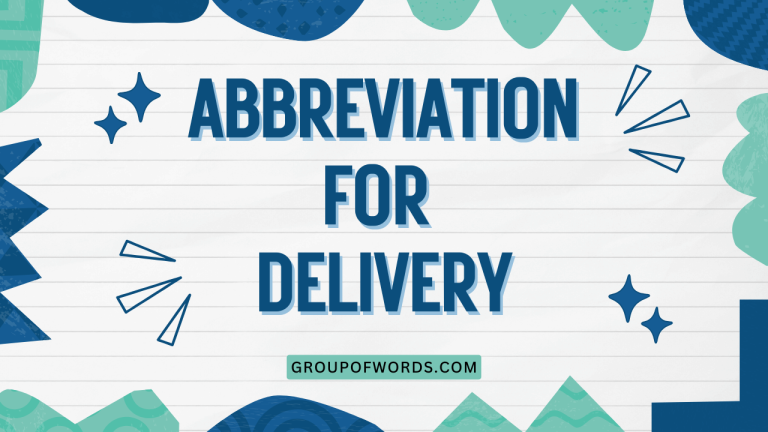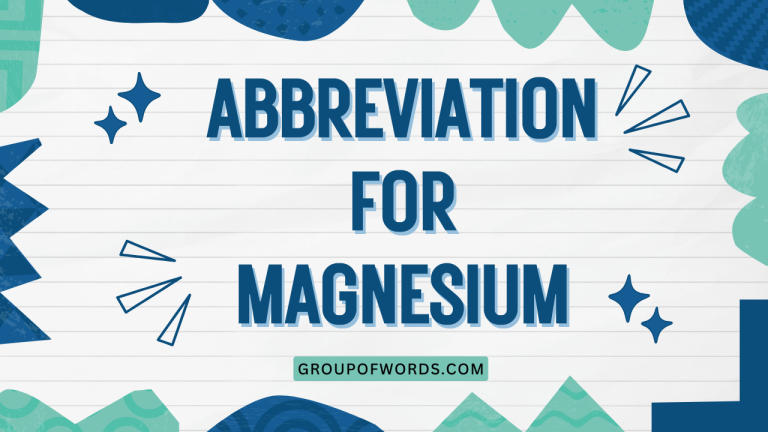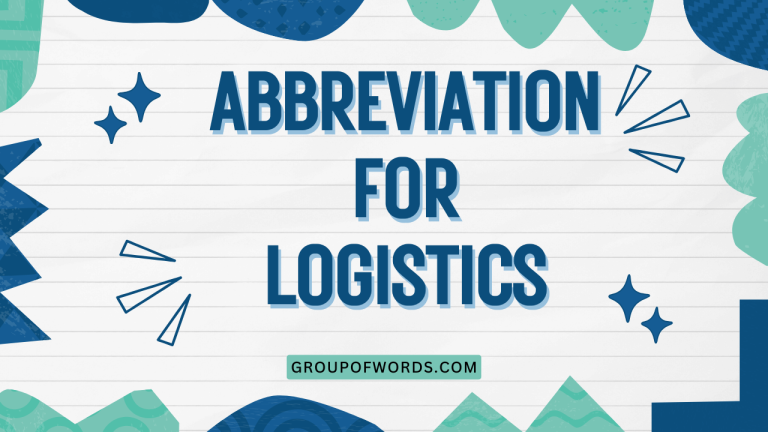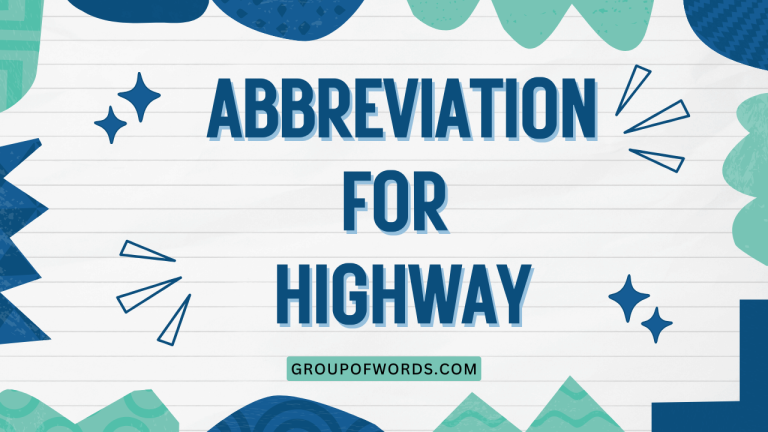Understanding Abbreviations for Coordinating Conjunctions
Coordinating conjunctions are fundamental elements of English grammar, linking words, phrases, and clauses of equal grammatical rank. Recognizing and understanding the common abbreviations used to represent these conjunctions can significantly enhance your reading comprehension and writing efficiency.
This article provides a comprehensive guide to abbreviations for coordinating conjunctions, detailing their definitions, structural roles, usage rules, and common pitfalls. Whether you’re a student, writer, or language enthusiast, this guide will equip you with the knowledge and skills needed to master this essential aspect of English grammar.
This article is structured to benefit learners of all levels, from beginners seeking a basic understanding to advanced students aiming to refine their grammatical expertise. By breaking down complex concepts into manageable segments, providing numerous examples, and offering practical exercises, this guide ensures a thorough and effective learning experience.
So, let’s embark on this journey to unlock the secrets of abbreviated coordinating conjunctions and elevate your command of the English language.
Table of Contents
- Introduction
- Definition of Coordinating Conjunctions
- Structural Breakdown of Coordinating Conjunctions
- Types and Categories of Coordinating Conjunctions
- Examples of Coordinating Conjunctions
- Usage Rules for Coordinating Conjunctions
- Common Mistakes with Coordinating Conjunctions
- Practice Exercises
- Advanced Topics
- FAQ
- Conclusion
Definition of Coordinating Conjunctions
A coordinating conjunction is a word that connects words, phrases, or clauses of equal grammatical rank within a sentence. In simpler terms, they join elements that are structurally similar. These conjunctions play a crucial role in creating compound sentences and complex phrases, allowing for the expression of multiple ideas within a single sentence.
Coordinating conjunctions are essential for creating coherent and grammatically correct sentences. They ensure that the elements being joined are balanced and contribute equally to the overall meaning of the sentence.
Understanding their function is vital for effective communication and clear writing.
While there isn’t a direct abbreviation for the term “coordinating conjunction,” understanding which words fall into this category is crucial. These words are often remembered by the mnemonic FANBOYS.
Structural Breakdown of Coordinating Conjunctions
Coordinating conjunctions adhere to specific structural rules to ensure grammatical correctness. The most fundamental rule is that they must connect elements of equal grammatical weight.
This means that a coordinating conjunction can link two nouns, two verbs, two phrases, or two independent clauses, but it cannot link a noun and a clause directly without other structural adjustments.
The placement of a coordinating conjunction is also significant. It typically appears between the elements it connects.
When joining two independent clauses, a comma usually precedes the conjunction. However, when joining shorter phrases or words, the comma may be omitted.
Understanding these structural principles is essential for constructing grammatically sound sentences and avoiding common errors in writing. The following points summarize the key structural considerations:
- Equal Grammatical Rank: Connects elements of the same type (nouns, verbs, phrases, clauses).
- Placement: Typically appears between the elements it connects.
- Comma Usage: Generally precedes the conjunction when joining independent clauses.
Types and Categories of Coordinating Conjunctions
There are seven primary coordinating conjunctions in the English language. These are commonly remembered by the acronym FANBOYS:
- F – For
- A – And
- N – Nor
- B – But
- O – Or
- Y – Yet
- S – So
Each of these conjunctions serves a distinct purpose in connecting ideas and expressing relationships between elements. Understanding these nuances is crucial for effective writing and communication.
For
For introduces a reason or explanation. It indicates the cause of something. It functions similarly to “because.”
And
And connects similar or related ideas. It indicates addition or continuation.
Nor
Nor connects two negative ideas. It indicates that neither of the options is true.
But
But introduces a contrast or exception. It indicates a difference or opposition.
Or
Or introduces an alternative or choice. It indicates a possibility between two or more options.
Yet
Yet introduces a contrast, similar to “but,” but often with a sense of surprise or unexpectedness.
So
So indicates a result or consequence. It shows the effect of something.
Examples of Coordinating Conjunctions
The following tables provide numerous examples of how each coordinating conjunction is used in sentences. These examples illustrate the different ways in which these conjunctions can connect words, phrases, and clauses to create complex and meaningful sentences.
Examples Using “For”
“For” introduces a reason or explanation.
| Sentence | Explanation |
|---|---|
| He couldn’t go to the party, for he was feeling unwell. | “For” explains the reason he couldn’t attend the party. |
| She studied hard, for she wanted to pass the exam. | “For” shows the reason she studied diligently. |
| They stayed inside, for it was raining heavily. | “For” provides the reason they remained indoors. |
| I brought an umbrella, for the forecast predicted rain. | “For” explains why the speaker brought an umbrella. |
| He apologized, for he knew he had made a mistake. | “For” provides the reason for his apology. |
| The plants withered, for they hadn’t been watered. | “For” explains why the plants died. |
| She wore a coat, for it was cold outside. | “For” gives the reason she wore a coat. |
| I couldn’t hear him, for the music was too loud. | “For” explains why the speaker couldn’t hear. |
| He was tired, for he had worked all day. | “For” provides the reason for his tiredness. |
| She was happy, for she had received good news. | “For” explains why she was happy. |
| The road was closed, for there had been an accident. | “For” gives the reason for the road closure. |
| He ate quickly, for he was late for his meeting. | “For” explains his hurried eating. |
| She practiced daily, for she wanted to improve her skills. | “For” shows her motivation for practicing. |
| They moved to a new city, for they wanted a fresh start. | “For” explains the reason for their move. |
| I took a taxi, for I didn’t want to be late. | “For” gives the reason for taking a taxi. |
| He stayed up late, for he had a lot of work to do. | “For” explains why he stayed up late. |
| She saved money, for she wanted to buy a house. | “For” shows her reason for saving. |
| They cancelled the trip, for the weather was terrible. | “For” explains why the trip was cancelled. |
| I wore sunglasses, for the sun was very bright. | “For” gives the reason for wearing sunglasses. |
| He studied abroad, for he wanted to broaden his horizons. | “For” explains his motivation for studying abroad. |
| She volunteered, for she wanted to help others. | “For” shows her reason for volunteering. |
| They exercise regularly, for they want to stay healthy. | “For” explains their motivation for exercising. |
| I write every day, for I want to improve my skills. | “For” shows my reason for writing. |
| He cooks often, for he enjoys making food. | “For” explains his enjoyment of cooking. |
Examples Using “And”
“And” connects similar or related ideas.
| Sentence | Explanation |
|---|---|
| She likes to read books and watch movies. | “And” connects two activities she enjoys. |
| He plays the guitar and sings in a band. | “And” connects two musical activities he does. |
| They went to the park and had a picnic. | “And” connects two activities they did at the park. |
| I need to buy milk and bread from the store. | “And” connects two items on a shopping list. |
| She is intelligent and kind. | “And” connects two positive qualities. |
| He is tall and handsome. | “And” connects two physical attributes. |
| They are rich and famous. | “And” connects two aspects of their success. |
| I enjoy coffee and tea. | “And” connects two beverages I like. |
| She speaks English and French. | “And” connects two languages she speaks. |
| He works hard and earns a good salary. | “And” connects his effort and its result. |
| The sun is shining, and the birds are singing. | “And” connects two pleasant aspects of the weather. |
| She laughed and cried during the movie. | “And” connects two emotional responses to the movie. |
| He studied all night and passed the exam. | “And” connects his studying and its positive outcome. |
| They traveled to Europe and visited many countries. | “And” connects their travel and their destinations. |
| I cooked dinner and set the table. | “And” connects two tasks related to meal preparation. |
| She danced and sang at the party. | “And” connects two activities she did at the party. |
| He writes novels and short stories. | “And” connects two types of writing he does. |
| They paint and sculpt in their free time. | “And” connects two artistic activities they enjoy. |
| I garden and hike on weekends. | “And” connects two outdoor activities I enjoy. |
| She volunteers and donates to charity. | “And” connects two ways she helps others. |
| He manages a team and leads projects. | “And” connects two aspects of his job. |
| She researches and publishes articles. | “And” connects two activities she does in her research. |
| They design and build houses. | “And” connects two related aspects of their work. |
| I strategize and execute plans. | “And” connects two phases of project management. |
| He analyzes data and creates reports. | “And” connects two steps in data analysis. |
Examples Using “Nor”
“Nor” connects two negative ideas.
| Sentence | Explanation |
|---|---|
| He doesn’t like coffee, nor does he like tea. | “Nor” connects two things he dislikes. |
| She didn’t call, nor did she send a message. | “Nor” connects two actions she didn’t take. |
| They didn’t study, nor did they pass the exam. | “Nor” connects their lack of studying and its consequence. |
| I haven’t seen him, nor have I heard from him. | “Nor” connects two types of contact I haven’t had. |
| She can’t sing, nor can she dance. | “Nor” connects two things she can’t do. |
| He doesn’t eat meat, nor does he eat fish. | “Nor” connects two types of food he avoids. |
| They didn’t complain, nor did they ask for help. | “Nor” connects two things they didn’t do. |
| I won’t go, nor will I let you go. | “Nor” connects two refusals. |
| She doesn’t know the answer, nor does he. | “Nor” connects two people who don’t know the answer. |
| He can’t read, nor can he write. | “Nor” connects two basic skills he lacks. |
| The food wasn’t good, nor was the service. | “Nor” connects two negative aspects of the experience. |
| She didn’t finish the book, nor did she start the sequel. | “Nor” connects two actions related to the book series. |
| He hasn’t traveled to Europe, nor has he been to Asia. | “Nor” connects two continents he hasn’t visited. |
| They didn’t clean the house, nor did they do the dishes. | “Nor” connects two household chores they didn’t do. |
| I won’t forget you, nor will I forgive you. | “Nor” connects two strong emotional statements. |
| She doesn’t like cats, nor does she like dogs. | “Nor” connects two types of pets she dislikes. |
| He can’t swim, nor can he surf. | “Nor” connects two water sports he can’t do. |
| They didn’t win the game, nor did they score a point. | “Nor” connects two aspects of their failure in the game. |
| I haven’t seen the movie, nor have I read the book. | “Nor” connects two forms of media I haven’t experienced. |
| She doesn’t speak Spanish, nor does she speak Italian. | “Nor” connects two languages she doesn’t speak. |
| He can’t cook, nor can he bake. | “Nor” connects two culinary skills he lacks. |
| They didn’t plant flowers, nor did they mow the lawn. | “Nor” connects two gardening tasks they didn’t do. |
| I won’t lie, nor will I deceive you. | “Nor” connects two forms of dishonesty I won’t engage in. |
| She doesn’t enjoy parties, nor does she enjoy crowds. | “Nor” connects two social situations she dislikes. |
| He can’t fix cars, nor can he repair appliances. | “Nor” connects two types of repair skills he lacks. |
Usage Rules for Coordinating Conjunctions
Coordinating conjunctions have specific usage rules that govern their proper application in sentences. These rules ensure clarity and grammatical correctness.
Understanding and adhering to these rules is crucial for effective communication.
- Connecting Equal Elements: Coordinating conjunctions must connect elements of equal grammatical rank. This means they can join nouns with nouns, verbs with verbs, phrases with phrases, and clauses with clauses.
- Comma Usage with Independent Clauses: When a coordinating conjunction joins two independent clauses, a comma should precede the conjunction. For example: “She studied hard, and she passed the exam.”
- No Comma with Short Phrases or Words: When a coordinating conjunction joins short phrases or individual words, a comma is usually not necessary. For example: “He likes coffee and tea.”
- Avoiding Overuse: While coordinating conjunctions are useful, overuse can lead to monotonous and lengthy sentences. It’s important to vary sentence structure and use other types of conjunctions and sentence constructions.
- Correct Placement: The coordinating conjunction should be placed directly between the elements it connects to avoid confusion.
Common Mistakes with Coordinating Conjunctions
Even experienced writers sometimes make mistakes with coordinating conjunctions. Being aware of these common errors can help you avoid them and improve your writing.
| Incorrect | Correct | Explanation |
|---|---|---|
| I like to read and going for walks. | I like to read and go for walks. | The elements being joined should be grammatically parallel. “Read” and “go” are both verbs in their base form. |
| She is intelligent, but lazy. | She is intelligent but lazy. | A comma is unnecessary when joining two adjectives with “but.” |
| He studied hard so he failed the exam. | He didn’t study hard, so he failed the exam. | “So” indicates a result. The original sentence implies studying hard leads to failure, which is illogical. |
| They went to the store, for to buy milk. | They went to the store to buy milk. | “For” introducing an infinitive phrase is redundant and grammatically incorrect. |
| I like coffee, and tea, and juice. | I like coffee, tea, and juice. | Commas are used to separate items in a list, but the final item is preceded by “and.” |
| She is not only smart, but also kind. | She is smart and kind. | “Not only…but also” is a correlative conjunction, not a coordinating conjunction. If used, both parts must be present. |
| He studied hard, and so he passed the exam because he was smart. | He studied hard, so he passed the exam. | Avoid redundant conjunctions. The “because he was smart” is unnecessary after “so.” |
| I wanted to go, but I was tired, so I stayed home. | I wanted to go, but I was tired; so I stayed home. | When combining multiple independent clauses with coordinating conjunctions, use a semicolon before “so” for clarity. |
| She likes to sing and dance, or she likes to draw. | She likes to sing and dance, or she likes drawing. | Maintain parallel structure. Singing and dancing are activities, so drawing should be an activity as well (drawing instead of draw). |
| He didn’t study nor did he sleep. | He didn’t study, nor did he sleep. | A comma is needed before “nor” when it connects two independent clauses. |
| She is beautiful, and also intelligent. | She is beautiful and intelligent. | “Also” is redundant when using “and” to connect two adjectives. |
| I wanted to go but it rained. | I wanted to go, but it rained. | A comma is needed before “but” when it connects two independent clauses. |
| He likes pizza, and burgers and fries. | He likes pizza, burgers, and fries. | Avoid using “and” multiple times in a list. |
| She is smart, but also she is kind. | She is smart, but she is also kind. | “Also” is redundant, and the sentence structure is awkward. |
| They didn’t call, nor they texted. | They didn’t call, nor did they text. | Invert the subject and auxiliary verb after “nor.” |
Practice Exercises
The following exercises will help you practice using coordinating conjunctions correctly. Each exercise focuses on a different aspect of coordinating conjunction usage.
Exercise 1: Identifying Coordinating Conjunctions
Identify the coordinating conjunction in each sentence.
| Question | Answer |
|---|---|
| 1. She likes coffee, but he prefers tea. | but |
| 2. He is tall and handsome. | and |
| 3. They didn’t study, nor did they pass the exam. | nor |
| 4. I brought an umbrella, for it was raining. | for |
| 5. She can sing or dance. | or |
| 6. He is rich, yet he is unhappy. | yet |
| 7. She was tired, so she went to bed. | so |
| 8. He likes to read and write. | and |
| 9. They went to the park, but it was closed. | but |
| 10. I need milk and bread. | and |
Exercise 2: Correcting Sentences with Coordinating Conjunctions
Correct the following sentences that have errors in the use of coordinating conjunctions.
| Question | Answer |
|---|---|
| 1. I like to read and going for walks. | I like to read and go for walks. |
| 2. She is intelligent, but lazy. | She is intelligent but lazy. |
| 3. He studied hard so he failed the exam. | He didn’t study hard, so he failed the exam. |
| 4. They went to the store, for to buy milk. | They went to the store to buy milk. |
| 5. I like coffee, and tea, and juice. | I like coffee, tea, and juice. |
| 6. She is not only smart, but also kind. | She is smart and kind. |
| 7. He studied hard, and so he passed the exam because he was smart. | He studied hard, so he passed the exam. |
| 8. I wanted to go, but I was tired, so I stayed home. | I wanted to go, but I was tired; so I stayed home. |
| 9. She likes to sing and dance, or she likes to draw. | She likes to sing and dance, or she likes drawing. |
| 10. He didn’t study nor did he slept. | He didn’t study, nor did he sleep. |
Exercise 3: Filling in the Blanks with Coordinating Conjunctions
Fill in the blanks with the appropriate coordinating conjunction.
| Question | Answer |
|---|---|
| 1. She is smart, ______ she is also kind. | and |
| 2. He doesn’t like coffee, ______ does he like tea. | nor |
| 3. I brought an umbrella, ______ it was raining. | for |
| 4. She can sing ______ dance. | or |
| 5. He is rich, ______ he is unhappy. | yet |
| 6. She was tired, ______ she went to bed. | so |
| 7. He likes to read ______ write. | and |
| 8. They went to the park, ______ it was closed. | but |
| 9. I need milk ______ bread. | and |
| 10. He apologized, ______ he knew he was wrong. | for |
Advanced Topics
For advanced learners, understanding the nuances of coordinating conjunctions can lead to more sophisticated writing and analysis. This includes recognizing the subtle differences in meaning between conjunctions and exploring their role in creating complex sentence structures.
One advanced topic is the use of coordinating conjunctions in compound-complex sentences. These sentences combine elements of both compound and complex sentences, requiring a thorough understanding of conjunctions and clause structures.
Analyzing how these conjunctions function in different contexts can provide deeper insights into their grammatical roles.
Another area to explore is the stylistic use of coordinating conjunctions. Skilled writers can use these conjunctions to create specific effects, such as building suspense, emphasizing contrast, or creating a sense of rhythm.
Studying examples of such usage in literature can enhance your own writing abilities.
FAQ
Here are some frequently asked questions about coordinating conjunctions.
- What is a coordinating conjunction?
A coordinating conjunction is a word that connects words, phrases, or clauses of equal grammatical rank within a sentence. They are used to join elements that are structurally similar and contribute equally to the overall meaning of the sentence.
- What are the seven coordinating conjunctions?
The seven coordinating conjunctions are for, and, nor, but, or, yet, and so. These are often remembered by the acronym FANBOYS.
- Do I need a comma before a coordinating conjunction?
When a coordinating conjunction joins two independent clauses, a comma should precede the conjunction. However, when joining shorter phrases or individual words, a comma is usually not necessary.
- Can I start a sentence with a coordinating conjunction?
While it was traditionally discouraged, starting a sentence with a coordinating conjunction is now widely accepted, especially in informal writing. However, it should be used sparingly to avoid sounding too casual or repetitive.
- What happens if I overuse coordinating conjunctions?
Overusing coordinating conjunctions can lead to monotonous and lengthy sentences. It’s important to vary sentence structure and use other types of conjunctions and sentence constructions to maintain reader interest.
- How do I choose the right coordinating conjunction?
The choice of coordinating conjunction depends on the relationship you want to express between the elements you are connecting. And indicates addition, but indicates contrast, or indicates choice, for indicates reason, nor indicates negative addition, so indicates result, and yet indicates contrast with surprise.
- What is the difference between coordinating and subordinating conjunctions?
Coordinating conjunctions connect elements of equal grammatical rank, while subordinating conjunctions introduce dependent clauses and connect them to independent clauses. Subordinating conjunctions create a hierarchical relationship between clauses, whereas coordinating conjunctions create a balanced relationship.
- Can I use coordinating conjunctions in lists?
Yes, coordinating conjunctions are commonly used in lists to connect the final two items. A comma should precede the conjunction in a list of three or more items.
Conclusion
Mastering coordinating conjunctions is crucial for building grammatically correct and coherent sentences in English. By understanding their definitions, structural roles, usage rules, and common pitfalls, you can significantly enhance your writing and communication skills.
Remember the mnemonic FANBOYS to easily recall the seven coordinating conjunctions: for, and, nor, but, or, yet, and so.
Practice using these conjunctions in various contexts to solidify your understanding. Pay attention to comma usage, avoid overuse, and be mindful of the specific relationships each conjunction conveys.
With consistent effort and attention to detail, you can confidently and effectively use coordinating conjunctions to express your ideas with clarity and precision. Embrace the power of these small but mighty words to elevate your command of the English language.
